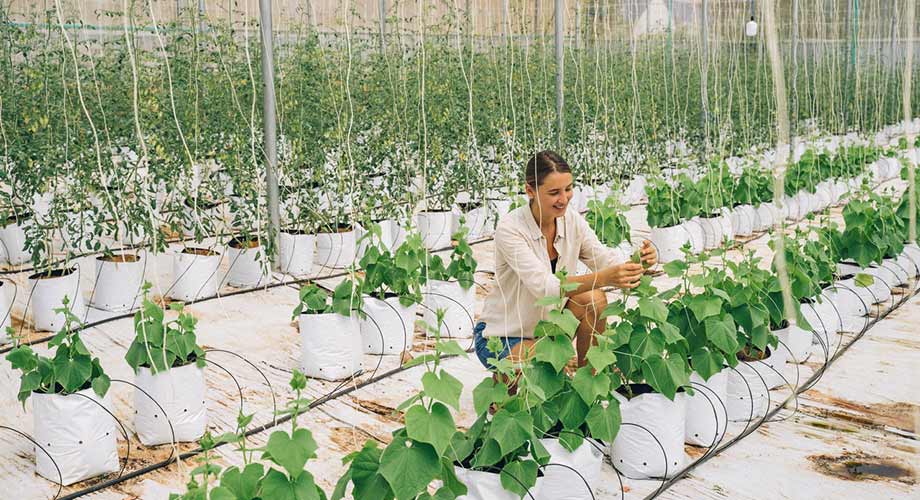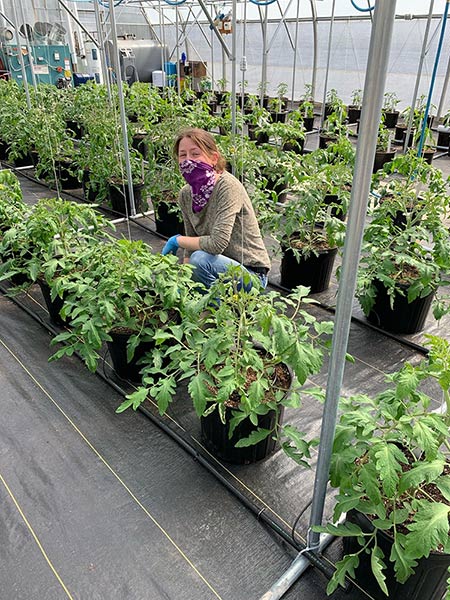- Actinovate Lawn & Garden | Biofungicide | Label
- Actinovate Lawn & Garden | Biofungicide | MSDS
- Actinovate Lawn & Garden | Biofungicide | OMRI Certificate (PDF)
- Actinovate Biofungicide | Product Handling Guidelines: Extended Shelf Life
- Agribon+ AG-15 Insect Barrier | Insert (PDF)
- Attracting & Putting Beneficial Insects to Work, with 5 Steps to Establishing an Insectary
- AzaGuard | Specimen Label | Johnny's Selected Seeds
- AzaGuard | Materials Safety Data Sheet
- AzaGuard | OMRI Certificate
- AzaGuard | Usage Rates
- Basil Downy Mildew and Prospera®️ DMR Basil | Breakthrough Breeding Innovation Provides Solutions
- Cucumber Beetle Lure Instructions | Tech Sheet (PDF)
- Disease Resistance Codes | Common Plant & Seed Crop Pathogens
- Disease Codes & Definitions for Common Vegetable & Basil Diseases (PDF)
- Fungicides/Bactericides/Algaecides | Comparison Chart (PDF)
- Insecticides | Comparison Chart (PDF)
- Jacto HD400 Ball Valve Sprayer | Operation Manual (PDF)
- Late Blight Awareness & Prevention | Tech Sheet (PDF)
- Organic 1r Seed Treatment | OMRI Certificate
- Organic 1r Seed Treatment | Safety Data Sheet
- Pest & Disease Control Basics in Greenhouse, Hydroponic & Other Protected-Culture Systems
- Physical, Biological & Botanical Pest & Disease Controls | Comparison Chart (PDF)
- Effective Sustainable Pest & Disease Control | Tips for Adopting an IPM Approach
- Rotate & Combine Crops & Controls | Prevent Resistance Buildup in Pests & Pathogens
- Pests & Diseases of Greenhouses & Hydroponic Systems | Tech Sheet (PDF)
- Repellents | Comparison Chart (PDF)
- RootShield Plus+ WP | Wettable Powder | Label
- RootShield Plus+ WP | Wettable Powder | MSDS
- RootShield Plus+ WP | Wettable Powder | OMRI Certificate
- Video: Strategies to Support Beneficial Insects, with Johnny's Education Coordinator
- Video: How to Manage Late Blight on Tomatoes (Phytophthora infestans)
- Video: Distributing Lady Bugs in a Screened Greenhouse | Integrated Pest Management at Johnny's Selected Seeds
- Video: How to Identify Late Blight on Tomatoes
- Plantskydd | Frequently Asked Questions
- Plantskydd Granular Repellent | Label
- Plantskydd Granular Repellent | SDS
- Plantskydd Granular Repellent | OMRI Certificate
- Plantskydd Repellent | Soluble Powder Concentrate (SPC) | Label
- Plantskydd Soluble Powder Concentrate (SPC) | MSDS
- Plantskydd Repellent | Soluble-Powder Concentrate | OMRI Certificate
- Row Cover & Insect Netting Options & Uses | Comparison Chart (PDF)
- SaniDate 5.0 | Sanitizer/Disinfectant | Label
- SaniDate 5.0 | Sanitizer/Disinfectant | MSDS
- SaniDate 5.0 | Sanitizer/Disinfectant | OMRI Certificate
- Video: Climate Adaptation for Vegetable & Flower Farmers | Johnny's Webinar Series
- Video: Growing Under Cover with Niki Jabbour | Johnny's Webinar Series
- Growing Under Cover with Niki Jabbour & Johnny's | Johnny's Educational Webinar Resources
- Video: Cover Cropping for Field & Garden with Collin Thompson | Johnny's Webinar Series
- Sluggo Snail & Slug Bait | Label
- Sluggo Molluscide | MSDS
- Sluggo | OMRI Certificate
- Surround WP Agricultural Crop Protectant | Label
- Surround WP | MSDS
- Surround WP | OMRI Certificate
- Dipel-DF | Bacillus thuringiensis (B.t.) for Organic Production | California SLN Label
- Dipel-DF | Bacillus thuringiensis (B.t.) for Organic Production | Label
- Dipel-DF | Bacillus thuringiensis (B.t.) for Organic Production | MSDS
- Dipel-DF | Bacillus thuringiensis (B.t.) for Organic Production | OMRI Certificate
- Insectary Plantings in the Farmscape | Options & Recommendations
- Farmscaping & Biological Control | An Overview
- MilStop SP | Label
- MilStop SP | MSDS
- MilStop SP | OMRI Certificate
- Video: Prospera® Red Downy Mildew-Resistant Basil
- OxiDate 2.0 | Broad-Spectrum Bactericide/Fungicide | MSDS
- Video: Prospera® Downy Mildew-Resistant Basil
- PyGanic Crop Protection | Application Rate Chart
- PyGanic Gardening | 1.4% | Label | OMRI-Listed | Approved for Certified-Organic Production
- PyGanic Gardening | 1.4% | MSDS
- Video: Disease-Resistant Varieties from Johnny's • Tutorial with Niki Jabbour
- PyGanic Crop Protection EC 5.0% II | Label | OMRI-Listed | Approved for Certified-Organic Production
- PyGanic Crop Protection EC 5.0% II | MSDS
- PyGanic Crop Protection EC 5.0% II | OMRI Certificate
- Video: Disease-Resistant Basils from Johnny's • Tutorial with Niki Jabbour
- PyGanic Gardening | 1.4% | OMRI Certificate
- OxiDate 2.0 | Broad-Spectrum Bactericide/Fungicide | Label Application Updates
- OxiDate 2.0 | Broad-Spectrum Bactericide/Fungicide | OMRI Certificate
- OxiDate 2.0 | Broad-Spectrum Bactericide/Fungicide | Label
- Just Add Flowers | An Introduction to Companion Planting for Vegetable & Herb Gardeners
- Liquid Copper Fungicide | Label
- Video: Veggie Remix: Bring New Flavors & Colors Into Your Garden | Johnny's Webinar Series
- Monterey Garden Insect Spray | OMRI Certificate
- Liquid Copper Fungicide | MSDS
Pest & Disease Control Basics in
Greenhouse, Hydroponic & Other Protected Culture Systems
ON THIS PAGE
- PREVENTING DISEASE in the Protected-Culture Setting
- COMMON DISEASES in Protected Culture
- PREVENTING PESTS in the Protected-Culture Setting
- COMMON PESTS in Protected Culture
- EMERGENT TECHNOLOGIES for Protected-Culture Pest & Pathogen Management
- Computer Modeling, Monitoring Apps, Network Communications, Robotics & AI
- Bioenzymes, Biostimulants, Mycorhhizae & Other Biosourced Substances
- LEARN MORE
Many types of production systems fall under the umbrella of indoor growing, with growers having widely varying levels of control over the conditions within them. But whether you practice greenhouse growing, hydroponics, or another form of controlled environmental agriculture (CEA), and whether your operation is high-tech, low-tech, or somewhere in-between, the key to pest and disease prevention and control is to ensure harmony between your plants, your equipment, and the environment.
There are several variables inherent in protected-culture settings that favor the group of pests and pathogens encountered in these systems. Chief among these:
- The warmth and humidity common to many (though not all) protected systems and crops, can set the stage for problems to gain a foothold.
- Protected systems accommodate more intensive production, year-round or nearly year-round, which can act to perpetuate pest and disease lifecycles.
Managing these and other problematic variables is among the primary concerns of indoor growers. Above all, exclusion and prevention are vital because it can be difficult to eradicate pests and diseases once they have entered your system.
The following provides an overview of common considerations and prevention strategies, with descriptions of some of the most common diseases and pests found in indoor growing systems. We also touch on emergent technologies that are being explored for use by indoor growers to help take the guesswork out of environmental control.
Note: For help identifying specific diseases and pests and site-specific management advice, we recommend consulting your local Cooperative Extension office.
PREVENTING DISEASE in the Protected-Culture Setting
To reduce the likelihood of disease, implement the following preventative measures.
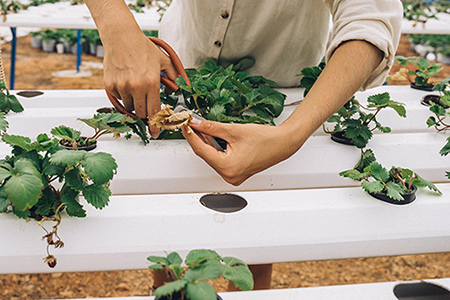
- Provide proper ventilation. The goal is to minimize free moisture on the plants. No matter your scale, location, facility type, or crops grown, ventilation is essential for temperature, humidity, and CO2 management. Whether you have an open or a closed system, you can position fans to move fresh air around the plants and through the structure. To optimize air flow, avoid crowding plants, prune vining and stoloniferous crops, and remove diseased or dead plant matter. Eliminate weeds that can block air flow.
- Ensure good drainage. What this entails will depend on your type of system and crops. Take care to neither overwater nor underwater. If growing in containers, be sure to monitor drainage systems for failures that can lead to oversaturated growing media and standing water.
- Choose cultivars bred for indoor growing environments. Varieties bred specifically for this purpose have tidy growing habits, disease resistances, and other characteristics that allow them to thrive under indoor growing conditions. For the greenhouse setting, we offer our Greenhouse Performers. For hydroponic systems, we offer Hydroponic Performers. We also offer a line that Grows Well in Containers.
- Limit stressors that can make plants more susceptible to disease. Ensure proper fertility and monitor variables such as temperature and humidity. Close attention to environmental conditions is particularly important when growing hydroponically. Regulation of the nutrient solution is particularly important when growing hydroponically to help reduce the impact and manage plant pathogens in hydroponics systems. To learn more, see our article on Hydroponic Seed Starting & Environmental Variables.
- Observe sanitation best practices. Establish clear protocols for maintaining hygiene, including measures that prevent inadvertent contamination via entry/exit, materials, and cultivation methods. If growing hydroponically, you may need to sanitize your growing media and/or your water supply. For more information, see our article on Hydroponic Grow Media: 10 Common Types, Care & Additional Considerations.
- Scout for disease. Walk through your crops 1–2 times per week to scout for emerging disease issues.
- Rest and rotate the system. Consider implementing a month-long crop-free period per year, if practicable, to help break disease cycles. Additional measures that mitigate disease risk include rotating crop families and otherwise strategically shifting location of crop plantings.
- Keep pests under control. Many pests can act as vectors that introduce and spread diseases. For example, cucumber beetles can spread bacterial wilt and whiteflies can spread tomato chlorosis virus and tomato yellow leaf curl virus. Tissue damage inflicted by pests can also provide a ready entry point for opportunistic infection.
COMMON DISEASES in Protected Culture
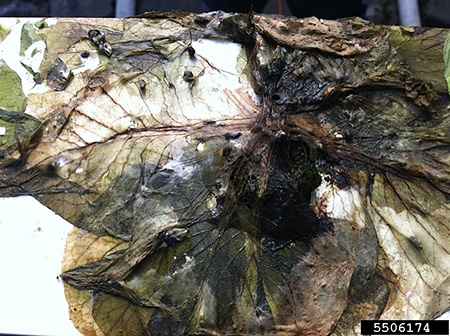
Common disease groups include:
- Bacterial disease: bacterial canker, bacterial speck, bacterial spot, bacterial wilt.
- Fungal disease and water molds: black root rot, botrytis, damping off, early blight, Fusarium and Pythium root rots, Fusarium wilt, powdery mildews, Sclerotinia (timber rot, white mold).
- Viral disease: beet pseudo-yellows virus, tomato leaf curl virus, tobacco mosaic virus (TMV), tomato spotted wilt virus (TSWV), tomato yellow leaf curl virus (TYLCV).
This is a very brief list of common CEA plant diseases, however, and many plant diseases resemble one another. For these reasons, we encourage you to explore the additional resources listed at the end of this article, and for a definitive diagnosis of disease, contact your local Cooperative Extension office to have a tissue sample analyzed.
PREVENTING PESTS in Protected Culture
Pests in the form of insects, mites, and other small life forms can cause direct crop damage and, as noted above, also transmit diseases. And as with diseases, once pests enter the indoor growing environs, they can be challenging to eradicate, and prevention is therefore critical. The following are some preventative measures to consider.
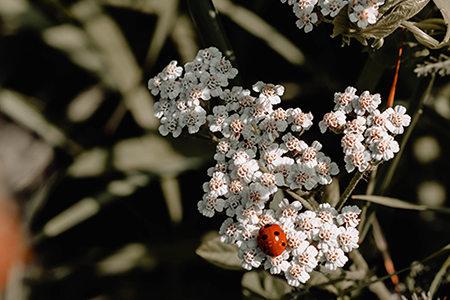
- Limit entry. Use insect screens and limit unnecessary traffic in and out of the greenhouse. If possible, install air-lock entrances to greenhouses, as doorways provide an easy entrance for pests. An air-lock entrance is essentially a double-door system that helps prevents exterior air from being pulled in through unscreened doorways. Entryways can also be fitted with exclusion netting of a mesh size determined by the particular form of pest pressure. Growers of berries in tunnels, for instance, are finding improved control of spotted wing drosophila (SWD) with the installation of netting over the tunnels and surrounding the entryway vestibule, a tactic that can be used whether the plants inside are tabletop, container, ground-gutter, or in-ground crops.
- Lay metallic mulch around the exterior of entrance ways. Researchers at the University of Florida found that a 20-foot strip of metallic mulch around the exterior of the ventilation air intake side wall reduced whitefly entrance by 90%.
- Set traps to monitor pest pressure. Various types of traps are used for different pests, but yellow sticky traps are the most generically useful. They will attract flying aphids, fungus gnats, whiteflies, leafminers, thrips, and others, which blue sticky traps are used mainly to attract thrips. Place 1–3 traps per 1000 ft2 (305 m2) in a gridlike fashion, with extra traps at doors and vents and in problem crops. Position them just above the plant canopy to approximately 16" above the crop. Monitor the traps 1–2 times per week. By identifying what and how many individual pests are trapped, you can follow the ups and downs of pest pressure over the crop cycle versus pest lifecycle, enabling you to proactively manage emerging pest issues. Replace traps regularly and place them in the same spots each time. Use your local Cooperative Extension services to help with pest identification, as necessary. Good recordkeeping is an important aspect of this and other tactics.
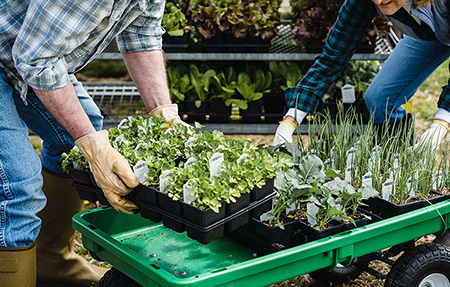
- Scout for pests. Yellow sticky traps will not catch all pests, so it is also important to walk through your crops 1–2 times per week to scout for emerging pest issues. As you scout, use a loupe or magnifying lens; some pests are not visible to the naked eye. Check both the tops and undersides of leaves, as well as blossoms, fruit, stems, and growing medium, for evidence of pests.
- Eliminate weeds, both in the greenhouse and around the perimeter of the greenhouse. Weeds can harbor pests or serve as secondary hosts for pests.
- Regularly remove fruit culls, dropped fruit, and any other dead plant matter from the greenhouse or grow room, to help reduce hospitable environments for pests.
- Make strategic use of predatory insects/mites and insectaries. Read our article on Attracting & Putting Beneficial Insects to Work, with 5 Steps to Establishing a Flowering Insectary, or watch a videoclip on Distributing Lady Bugs in a Screened Greenhouse: Integrated Pest Management at Johnny's Farm.
- Check your sources and quarantine new plants. Closely inspect new material coming into the production system, isolate plants before transplanting if there is any doubt, and be willing to reject any material that is infected. This applies to both pests and diseases; most pests are large enough to be seen either with the naked eye or a magnifying lens, but disease may be far less apparent. In all cases, obtain seeds and plant material only from certified or proven sources.
COMMON PESTS in Protected Culture
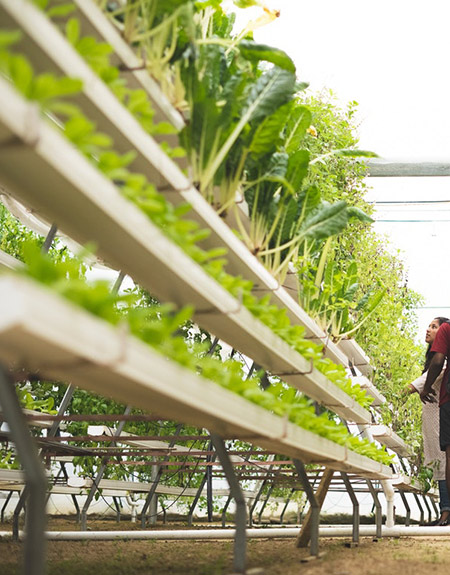
A wide range of pests can affect protected-culture growers, and we recommend you consult your local Cooperative Extension office to gain familiarity with those most common to your region, crops, and type of system, and for assistance with pest identification.
Among the most common pests encountered by indoor growers are aphids, mites, and whiteflies. Additional common greenhouse pests include armyworms, bloodworms, cutworms, fungus gnats, leafminers, loopers, nematodes, mealybugs, shore flies, slugs, snails, and thrips. This is just a sampling of a diverse group, however, and we've provided a few references at the base of this article to encourage readers to broaden their knowledge base.
EMERGENT TECHNOLOGIES for Protected-Culture Pest & Pathogen Prevention
While unknown variables will always present an element of risk in growing crops, the production intensity and elevated costs associated with indoor growing make it especially important for growers to make educated choices related to pest and disease control. Should one or two variables veer off-kilter, it can set off a chain reaction leading to rapid deterioration or death of the crop once disease or pests infiltrate the system.
Not all growers, systems, and crops require an elaborate or costly new technology for prevention and control; for those at risk, however, there is a promising array of options in development or already being deployed as economically viable solutions for protecting indoor crops. These, too, are numerous and varied, but for brevity we'll group them into two main types: computer modeling, monitoring, and artificial intelligence (AI) to automate control decisions in indoor systems; and biosourced and naturally occurring compounds for integrated pest management (IPM) application.
Computer Modeling, Monitoring Apps, Network Communications, Robotics & AI
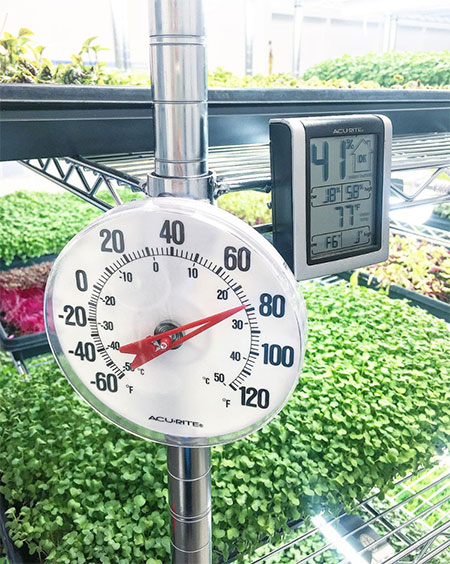
Just as the architecture of indoor farming grows more diversified and elegant, so too are monitoring and management systems within them being increasingly refined and adapted.
An example of how robotics is being explored for crop protection includes its use both in indoor culture and field production for the nighttime application of ultraviolet light to suppress powdery mildews from becoming established. Trials are being conducted on the effect of UV at numerous sites throughout the country on strawberries, grapes, cucumbers, tomatoes, hops, hemp, and other crops.
Digital programs are helping growers gain greater precision over the many conditions known to tip the balance against or in favor of disease pressures. Environmental variables as well as those that signify plant vigor can now be remotely monitored, recorded, and run through algorithms via probes, sensors, image processing, and smart devices, then responded to accordingly in real time. Some variables being tracked and analyzed either separately or at once may include:
- Moisture level at root zone
- pH at root zone
- Electrical conductivity (EC) of nutrient solution
- Salinity of irrigation water or nutrient solution
- Last and next irrigation
- Temperature of growing substrate
- Ambient temperature
- Relative humidity
- Root depth
- Electrical potential by plant tissue type
An example of how latter is being interpreted was recently revealed by pioneering electrophysiology technology using artificial intelligence to decipher the signals plants emit when adapting to changes in their environment. In one experiment, changes in plant electrical activity were tracked and graphed longitudinally across the tomato plant lifecycle in Swiss glasshouses. Tapping into plant signaling networks is anticipated to provide early warnings of a wide range of crop stressors, including the ability to check continuously for specific pathogens or pests before visual signs are evident.
Not every indoor grower today may be practicing such multiparadigm modeling, but modeling plant growth, the environment, and how the environment affects the plant is what every successful grower must do, even if intuitively. For growers facing pest and disease pressures at their production sites, it is simply a matter of determining to what degree applying which technology would be most beneficial in their own operation.
Bioenzymes, Biostimulants, Mycorhhizae & Other Biosourced Substances
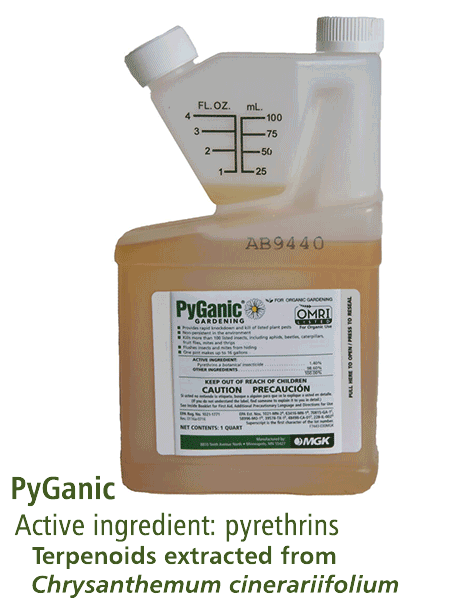
From nature, to nature is a precept as old as time, but applying it now is more important than ever if we are to reach a zero-waste target. A diversity of raw materials with uses that hearken back generations is being researched and sourced to manufacture products that exert antibacterial, antifungal, nematicidal, symbiotic, synergistic, or other plant-protective effects in novel ways. Greener, safer, and more efficient biopesticides being brought to the growing industry, both for indoor and outdoor production. These products may be applied in various ways: as seed treatments, root dips, foliar applications, or for amending or sanitizing growing media, irrigation water, or nutrient solutions.
Some of these materials may be nearly ubiquitous or not altogether new, such as diatomaceous earth, a mechanical and repellent control in long use; the range of Bacillus thuringiensis bacterial strains used in Bt products; and pyrethrins and other botanically-sourced insecticides. What is new is the growing awareness and appreciation of the panoply of naturally occurring biota and substances and their utility in sustainable and regenerative agriculture. Over the past 50 years, for example, research has led to a greater understanding of the roles that symbiotic endomycorrhizae play in colonizing root tissues to form a highly evolved, mutualistic protective shield against pathogens. This has led in turn to the development of a number of commercially available products that many greenhouse and nursery growers now rely upon. Organic materials such as humic and fulvic acid formulations are also now available for use in seed coat treatments to ward off decay, or as inputs to grow media, to serve a biostimulant function.
Still, our understanding of the prophylactic and treatment potential of naturally occurring substances and organisms in the agroecosystem is in its infancy. For instance, microbiome research been only recently been initiated to map and characterize the full functionality of microorganisms found in hydroponic systems, as well as to assess how changes in the plant-microbiome networks in the hydroponic setting function to impact plant productivity and mitigate plant disease and food safety risks.
Learn More
Whereas some indoor growers achieve excellent results from passive means, others find midlevel solutions to be the most time-saving and cost-effective, and others still profit most from advanced technologies to achieve precisely controlled growing environments. Whether your crops grow in the greenhouse, conservatory, hydroponic operation, vertical farm, a foil-lined grow closet, or outer space, the target is to maximize plant well-being and growth while reducing risk.
This article is primarily intended to give an overview of the critical points in prevention and control of pests and pathogens in protected-culture settings. We've also taken a glimpse into some newer, integrated crop-protection strategies for CEA that hold added potential for positively impacting societal, environmental, and food self-sufficiency issues. Altogther, we hope you find this information useful as you seek sustainable solutions that suit your unique indoor growing efforts.
Resources from Johnny's
- Printable Tech Sheet (PDF) version of this article…
- Visit our Pest & Disease Control Library…
- Visit our Hydroponics Library…
- Explore our line of Pest & Disease Controls…
References
Future Farming. 2020. Ultra violet lamp robots tackle grape powdery mildew.
Yang, R., et al. 2021. Detection of abnormal hydroponic lettuce leaves based on image processing and machine learning. Inf. Process. Agric. (in press).
Samtani, J.B., et al. 2019. The status and future of the strawberry industry in the United States. HortTechnology, 29 (1).
PhytlSigns. 2022. Tomato plant life cycle stages recorded for the first time.
Ohio State. 2019–2023. Plant-microbiome networks impact plant productivity and mitigate plant disease and food safety risks in hydroponic production.
Additional Recommended Reading
- Cooperative Extension
- Extension.org. Includes a knowledge base and a tool for finding your local Cooperative Extension branch.
- Disease
- McGrath, M. 2012. Zero disease tolerance in high tunnels. Am. Veg. Grower.
- UF|IFAS. U-Scout program of the University of Florida.
- General CEA Grower Resources
- Cornell University. Controlled environment agriculture.
- University of Florida. Small farms & alternative enterprises — hydroponics.
- Pests
- UF|IFAS. 2018. Exclusion methods for managing greenhouse and vegetable pests.
- University of Kentucky. Greenhouse insect management.
- UF|IFAS. Vegetable insect identification and management. Florida Greenhouse Vegetable Production Handbook, 3.
- Crop-Specific Resources
- e-GRO Edible Alert. Leafy Greens & Herbs: Common diseases of hydroponic leafy greens and herbs.
- Cornell University. Lettuce: Hydroponic lettuce handbook.
- Cornell University. Spinach: Hydroponic spinach production handbook.
- Mississippi State University. Tomatoes: Diseases and abiotic problems in greenhouse tomatoes.


